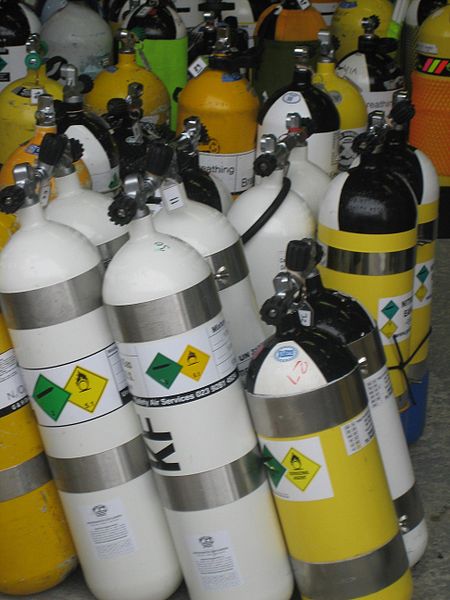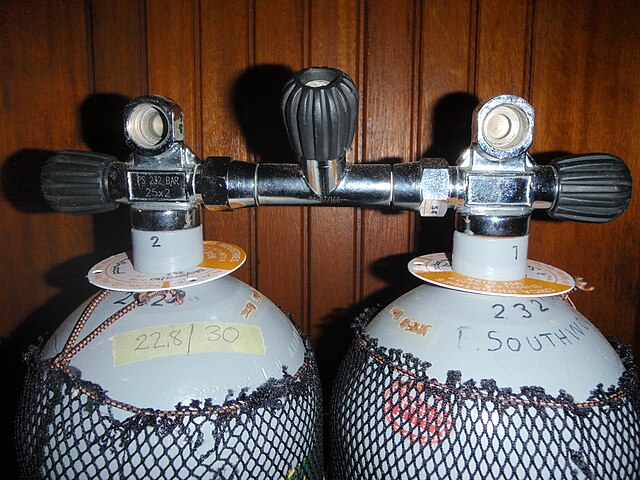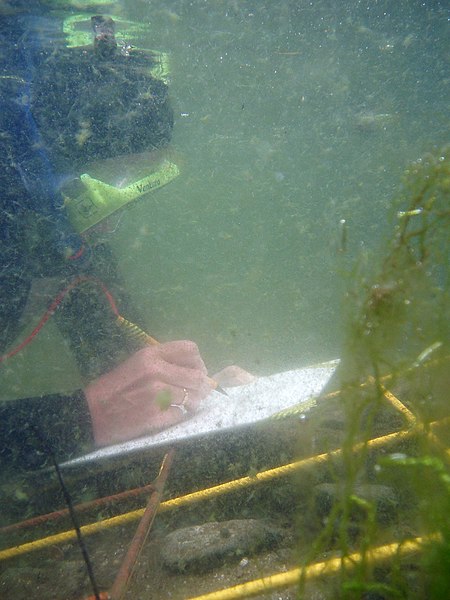A diving cylinder or diving gas cylinder is a gas cylinder used to store and transport high pressure gas used in diving operations. This may be breathing gas used with a scuba set, in which case the cylinder may also be referred to as a scuba cylinder, scuba tank or diving tank. When used for an emergency gas supply for surface supplied diving or scuba, it may be referred to as a bailout cylinder or bailout bottle. It may also be used for surface-supplied diving or as decompression gas. A diving cylinder may also be used to supply inflation gas for a dry suit or buoyancy compensator. Cylinders provide gas to the diver through the demand valve of a diving regulator or the breathing loop of a diving rebreather.
Diving cylinders to be filled at a diving air compressor station
Twin 12-litre steel cylinder set
Regulators with DIN-valve (left) and yoke-valve (right)
Face sealed isolation manifold on twin 12 L steel cylinders. The plastic discs are records of the latest internal inspection
Professional diving is underwater diving where the divers are paid for their work. Occupational diving has a similar meaning and applications. The procedures are often regulated by legislation and codes of practice as it is an inherently hazardous occupation and the diver works as a member of a team. Due to the dangerous nature of some professional diving operations, specialized equipment such as an on-site hyperbaric chamber and diver-to-surface communication system is often required by law, and the mode of diving for some applications may be regulated.
A US Navy diver at work. The umbilical supplying air from the surface is clearly visible.
Surface supplied commercial diving equipment on display at a trade show
A scientific diver at work
US Navy Clearance Divers defusing a MK17 Buoyant Mine








